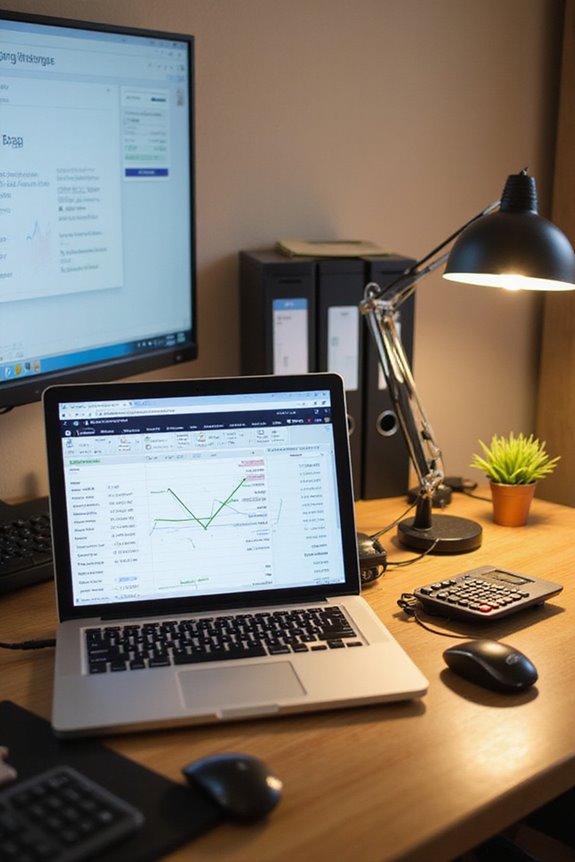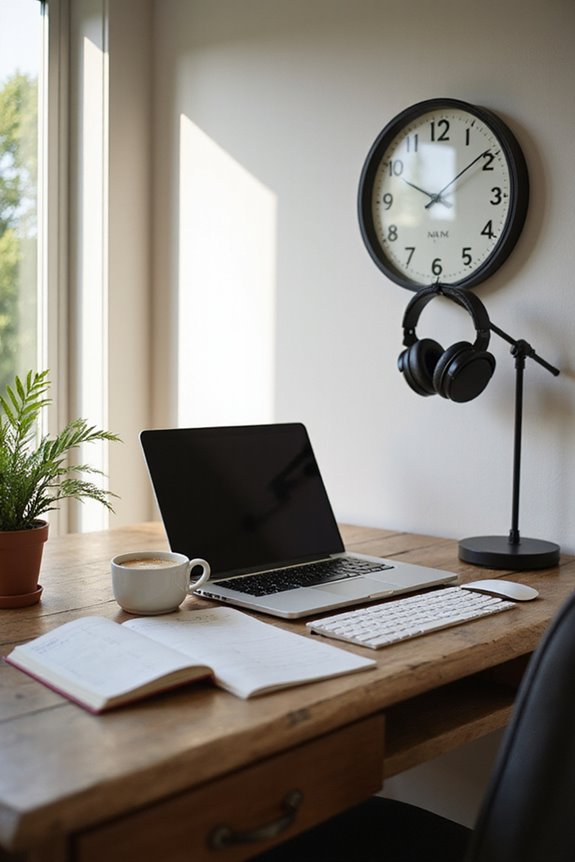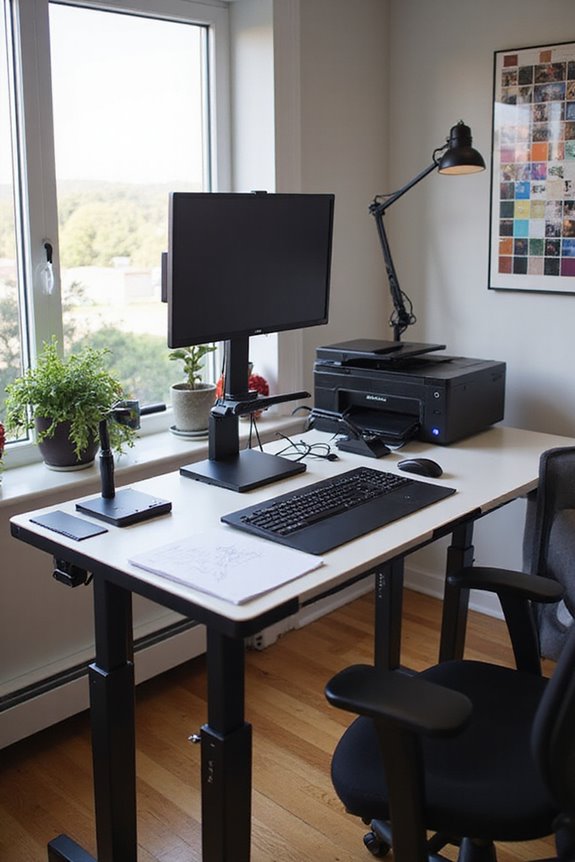To maintain work-life balance in a home office, I recommend creating a designated workspace to separate professional duties from personal life. Setting regular office hours helps define my work time, while making my availability clear to colleagues and family fosters understanding. Additionally, turning off notifications after hours reduces distractions. It’s essential to take breaks and signal the end of the workday by packing up. Implementing these strategies can lead to a more balanced and productive remote work experience. Learn how to enhance your setup and time management next.
Key Takeaways
- Establish a designated workspace to create a physical boundary between work and personal life.
- Set regular office hours to define your work time and personal time clearly.
- Communicate your availability to colleagues and family to ensure mutual understanding of your boundaries.
- Turn off notifications after work hours to minimize distractions and maintain focus on personal time.
- Take regular breaks and pack up work materials at the end of the day to signal the transition from work to personal activities.
Flexible Work Arrangements for Enhanced Productivity
As the landscape of work continues to evolve, it’s clear that flexible work arrangements can greatly enhance productivity for both employees and organizations. Flexible schedules, including remote work options, allow us to tailor our work hours to align with personal productivity peaks. This autonomy in scheduling can lead to improved time management, as we can allocate focused work hours without the distractions often found in traditional office settings.
Moreover, effective remote teamwork becomes feasible with the right tools, enabling collaboration without geographical limitations. Studies indicate that well-organized hybrid models can boost productivity by up to 5%. By embracing flexibility, we not only cater to our individual work styles but also contribute to greater efficiency and satisfaction within our teams.
Designing an Effective Home Office Space
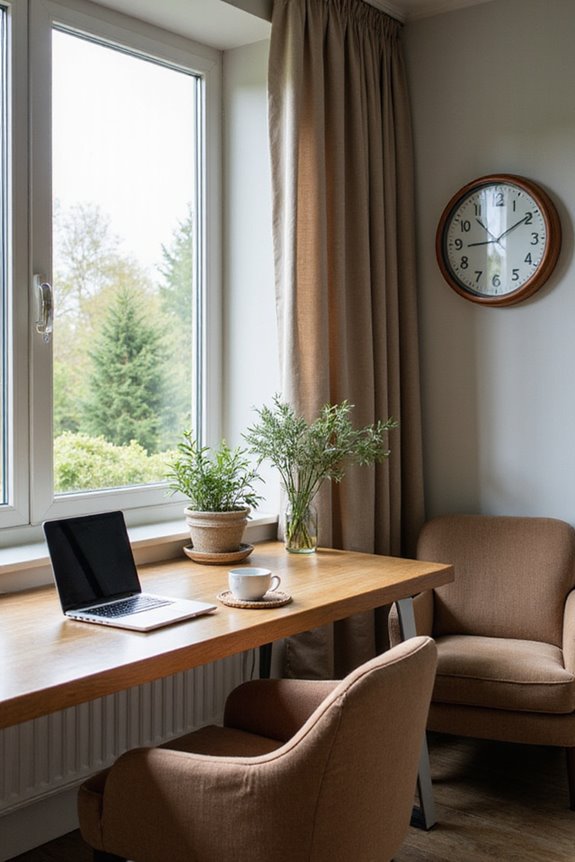
Designing an effective home office space is essential for maximizing productivity and maintaining a healthy work-life balance. First, I recommend creating an ergonomic setup with adjustable chairs and desks that prevent discomfort during long work hours. Position your monitor at eye level and guarantee proper keyboard placement to reduce strain.
Incorporating biophilic design can greatly enhance your workspace. Adding plants and natural materials promotes well-being and reduces stress, while maximizing natural light can uplift your mood and alertness. Additionally, consider investing in adjustable height desks to further support your comfort and productivity throughout the day.
Consider a clutter-free, minimalist design to foster focus. Modular furniture and task-based zones allow flexibility for different activities, enhancing functionality. By thoughtfully designing your home office, you’ll cultivate an environment that supports both productivity and personal well-being.
Time Management Techniques for Remote Workers
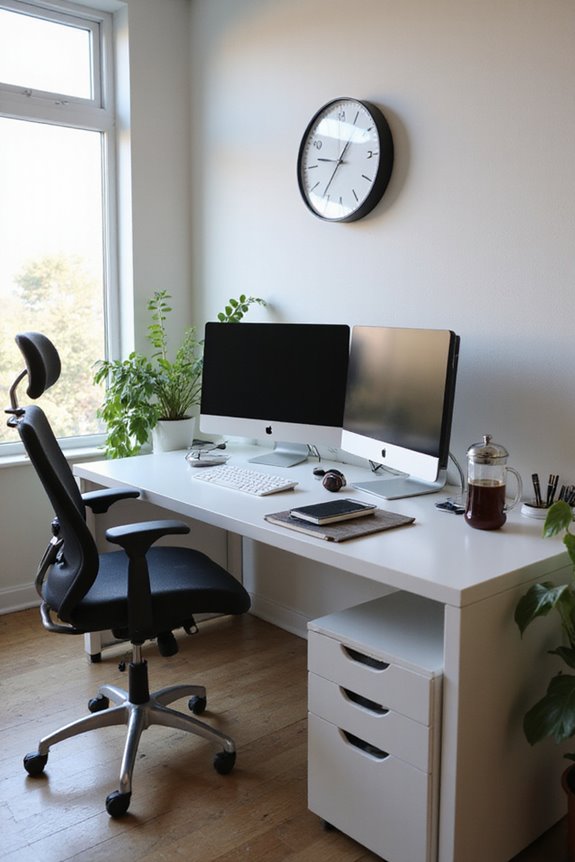
Effective time management is essential for remote workers, especially when balancing professional and personal responsibilities. Here are some techniques I’ve found helpful:
- Set Clear Goals: I identify daily, weekly, and monthly objectives using task management tools. Prioritizing tasks based on deadlines helps me stay focused.
- Establish Routine: I stick to a schedule that mirrors an office environment, with defined start and end times. Regular breaks, like the Pomodoro technique, help maintain my focus.
- Leverage Technology: Time tracking apps allow me to monitor productivity, while project management software keeps my tasks organized.
- Minimize Distractions: I create a dedicated workspace and limit multitasking, which enhances my task prioritization.
Effective Communication and Collaboration Strategies
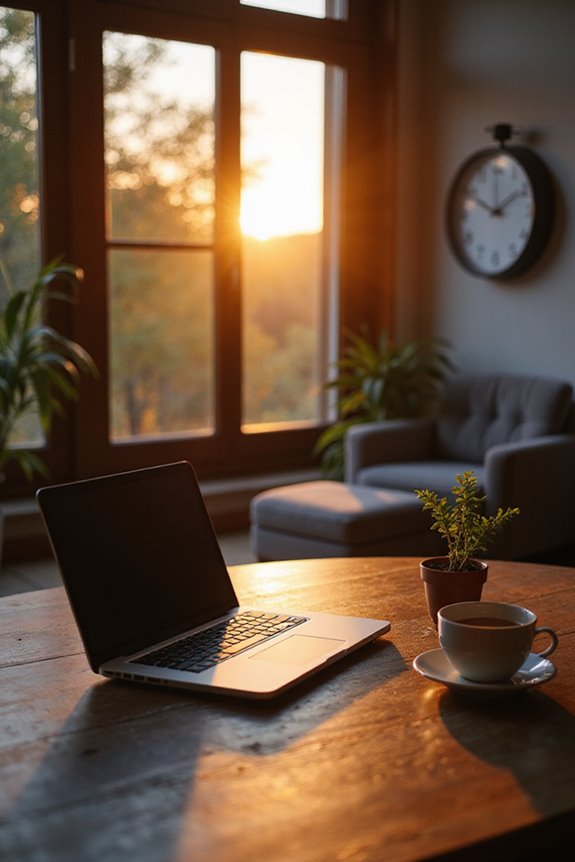
In today’s remote working environment, where communication is often mediated by technology, finding effective strategies for collaboration is essential. I’ve found that leveraging a mix of communication tools can greatly enhance virtual collaboration. For instance, while email remains dominant, utilizing online chat tools can streamline internal discussions, especially as their popularity increases.
Video meetings are vital, with 83% of organizations relying on them for real-time connection. I also recommend embracing asynchronous communication, which allows flexibility for remote workers. Platforms like Microsoft Teams can integrate project management features, improving organization and productivity. By focusing on these strategies, I’ve seen my team feel more engaged and connected, ultimately enhancing our collaborative efforts. Additionally, ensuring a stable workspace with ergonomic solutions can further boost productivity and comfort during these interactions.
Establishing Boundaries Between Work and Personal Life

Establishing boundaries between work and personal life is essential for maintaining overall well-being while working from home. I’ve found that effective boundary setting starts with creating a designated workspace. This promotes work separation and helps with mental shifts. Keep your workspace organized, using ergonomic furniture to enhance comfort and productivity.
Consider setting regular office hours to clearly define your work time and personal time. Communicate these hours to colleagues and family, ensuring everyone understands your availability. To manage distractions, turn off notifications after hours and schedule a digital detox. Taking breaks and packing up work materials at the end of the day signals a clear end to work, allowing you to recharge and enjoy your personal time.
Boosting Productivity and Performance in a Home Office
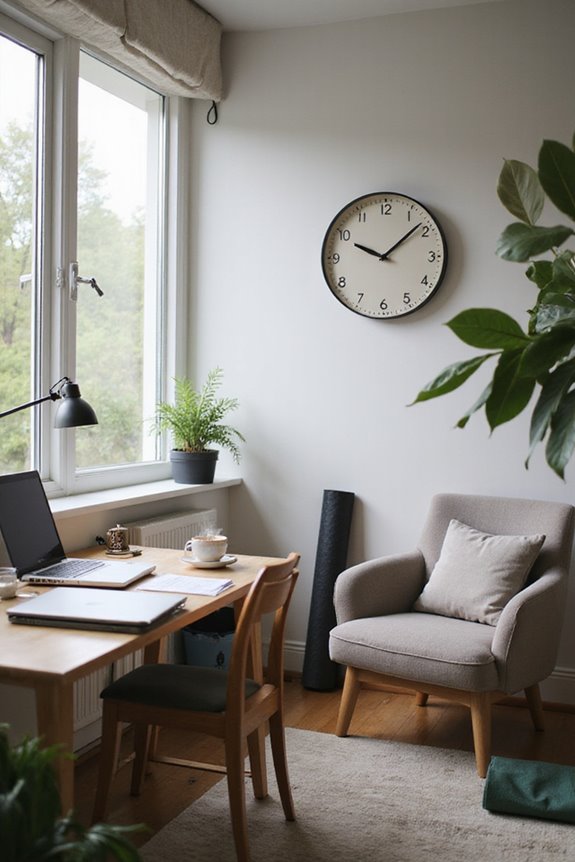
Boosting productivity and performance in a home office requires a strategic approach that combines an optimized workspace with effective time management techniques.
Firstly, creating a dedicated workspace helps minimize distractions and enhances focus. Ergonomic furniture supports comfort during long hours, while good lighting improves alertness. An organized environment fosters higher productivity levels.
Next, I prioritize tasks using tools like the Eisenhower matrix to focus on high-impact activities. Implementing time-blocking methods promotes structured work periods and breaks, preventing burnout. I limit multitasking to enhance concentration and accuracy.
Finally, utilizing productivity tools and apps, such as timers for the Pomodoro Technique, guarantees consistent task completion. By establishing clear daily goals, I increase accountability and track progress effectively. Additionally, investing in ergonomic chairs can significantly improve comfort and support during extended work sessions.
Prioritizing Well-being and Health While Working Remotely
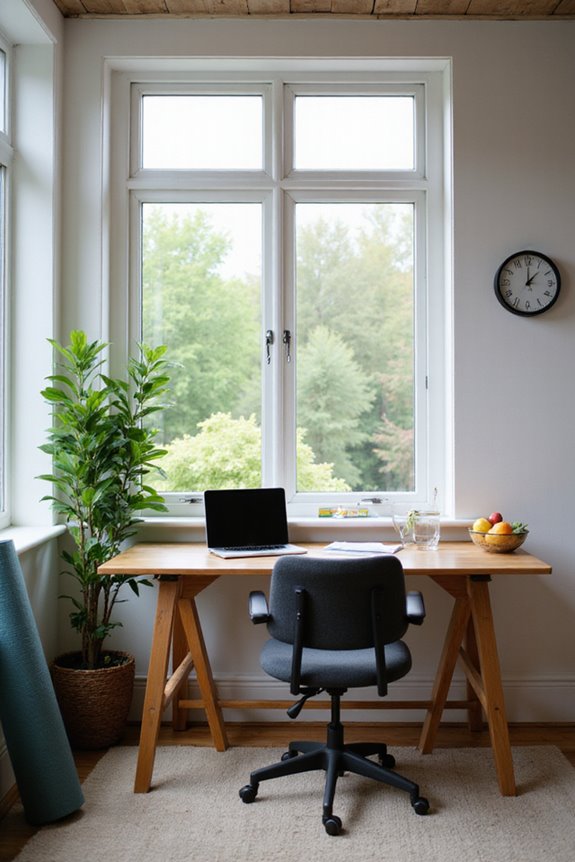
Prioritizing well-being and health while working remotely is essential, especially as many of us navigate the challenges of a home office environment. To combat feelings of loneliness and emotional distress, I make it a point to schedule regular virtual check-ins with colleagues. These connections help foster a sense of community and provide emotional support.
I also recognize the importance of setting clear work schedules to avoid burnout and maintain mental health. Taking regular movement breaks throughout the day not only combats the physical effects of prolonged sitting but also refreshes my focus. Additionally, I utilize digital wellness tools to monitor my mental health and encourage open communication with my team about our well-being needs.
Frequently Asked Questions
How Do I Deal With Distractions at Home?
Distractions at home can feel like pesky flies buzzing around my focus. I’ve learned that effective time management and setting boundaries are my shields, helping me reclaim productivity while keeping chaos at bay.
What Are the Signs of Burnout in Remote Work?
I’ve noticed some signs of burnout in my remote work, like continuous fatigue and decreased productivity. It’s tough when stress feels unmanageable, and I often miss the connection with my colleagues.
How Can I Improve My Home Office Ergonomics?
I’ve found that investing in ergonomic chairs and adjustable desks really improved my comfort. Proper height and support help me maintain good posture, reducing strain and increasing my focus during long work hours at home.
What Technology Tools Are Best for Remote Work?
Imagine a ship sailing smoothly; that’s how video conferencing and project management tools steer my remote work. They keep my crew connected, tasks organized, and guarantee we reach our destination without drifting off course.
How Do I Stay Motivated While Working From Home?
Staying motivated while working from home’s tough, but I’ve found goal setting and productivity techniques like the Pomodoro Technique really help. They keep me focused, and I can see my progress throughout the day.


